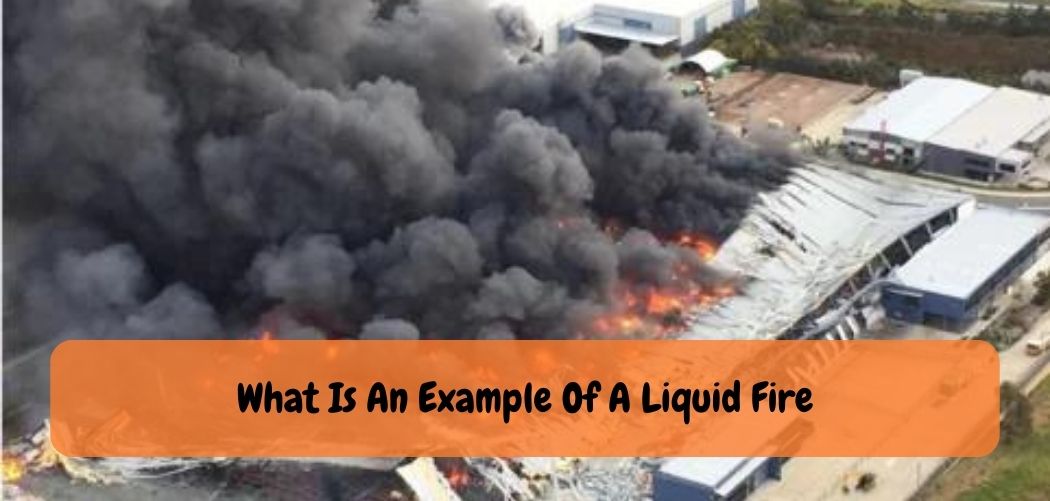A well-known example of a liquid fire is gasoline. This highly flammable substance is commonly use as fuel for vehicles and other machinery.
Liquid fire, an awe-inspiring phenomenon that combines the mesmerizing fluidity of a liquid with the intense, captivating energy of fire, represents a captivating intersection of science and wonder. Imagine a substance that appears to defy the laws of nature.
Flowing and swirling like molten metal, yet emanating the brilliant and volatile essence of fire. This remarkable occurrence can found in a rare class of substances that possess the unique ability to remain in a liquid state while being on fire—a concept that defies our everyday understanding of combustion.
One remarkable example of this mesmerizing occurrence is know as “Greek fire,” an ancient incendiary weapon shroude in mystery, renowned for its ability to burn on water and strike fear into the hearts of adversaries.
Delve into the captivating world of liquid fire, as we explore its history, science, and the intriguing tales that surround this exceptional phenomenon.
The Power Of Liquid Fire: Understanding The Basics
Liquid fire is a unique and powerful flame that has sparked human fascination. Scientists have studied the science behind liquid fire to understand its behavior and uses.
Historically, people have used liquid fire as a weapon of war. Today, in the industrial world, liquid fire plays an essential role in metal cutting and welding processes.
Liquid fire differs from traditional fire as it is more potent and can controlle more efficiently. This type of fire operates differently from other types of flames.
Making it a valuable tool in various applications. By understanding the basics of liquid fire, we can appreciate its power and potential uses in everyday life.
Title: Exploring Liquid Fire: The Enigmatic Case of Greek Fire
Liquid fire is a fascinating and rare occurrence, often associated with legendary substances that appear to burn like fire but maintain a liquid state. One of the most famous examples of this phenomenon is “Greek fire,”
A mysterious incendiary weapon that played a crucial role in naval warfare during the Byzantine Empire. In this informative guide, we’ll delve into the intriguing history, scientific principles, and the enigmatic tales surrounding this remarkable substance.
Chapter 1: The Legend of Greek Fire
- Explore the origins and historical significance of Greek fire.
- Uncover the myths and legends surrounding the creation and deployment of this powerful weapon.
- Discuss the impact of Greek fire on Byzantine military tactics and its role in shaping the outcome of significant historical events.
The Chapter 2: The Composition and Secrets
- Investigate the closely guarded recipe and composition of Greek fire.
- Analyze the ingredients, including potential candidates for the mysterious “secret ingredient.”
- Discuss the level of secrecy around the production and use of Greek fire, contributing to its legendary status.
Chapter 3: The Science Behind Liquid Fire
- Examine the scientific principles that allow a substance to burn while remaining in a liquid state.
- Explore the combustion process, focusing on the properties of Greek fire that made it burn on water.
- Compare Greek fire to modern incendiary materials, discussing the similarities and differences.
The Chapter 4: Modern Theories and Reconstructions
- Discover modern attempts to recreate Greek fire based on historical accounts and scientific knowledge.
- Discuss the challenges faced by researchers and historians in reconstructing this ancient technology.
- Explore the debate surrounding the effectiveness of modern reconstructions compared to the historical substance.
Chapter 5: Legacy and Influence
- Examine the lasting impact of Greek fire on naval warfare and military history.
- Discuss the potential influence of Greek fire on later incendiary weapons and military strategies.
- Explore the cultural and symbolic significance of Greek fire in the context of the Byzantine Empire and beyond.
Also Read: The Mystery Ingredient: What Chemical is in Liquid Fire?
Real-Life Examples Of Liquid Fire
Liquid fire, also know as class b foam, is use in firefighting to combat fuel or oil fires. It works by coating the flames, creating a barrier between the fuel and the oxygen required for the fire to burn.
Liquid fire is also use in industrial and househol settings to combat grease fires and can found in household extinguishers. The military also employs liquid fire for strategic purposes and has even weaponized it.
Different types of liquid fire have different advantages and disadvantages when it comes to their effectiveness in extinguishing fires.
However, the use of liquid fire is not without its controversy, as it can be harmful to the environment and human health. Despite this, it remains an important tool in the fight against fires.
Frequently Asked Questions On What Is An Example Of A Liquid Fire?
What Is A Liquid Fire?
A liquid fire is a substance that can burn with a liquid-like texture.
What Are The Ingredients Of Liquid Fire?
Different liquid fires have different ingredients, but common ones include alcohol and hydrocarbons.
Can Liquid Fires Be Dangerous?
Yes, liquid fires can be extremely dangerous if not handled safely and with caution.
How Are Liquid Fires Use?
Liquid fires are often use for special effects in film and theater productions, or for controlled burns in industrial settings.
How Can Liquid Fires Be Extinguishe?
Liquid fires require specialized extinguishers, like those containing foam, to safely put out the flames. Water should never use to fight a liquid fire, as it can exacerbate the flames.
Conclusion
After going through the article, it is safe to say that liquid fire is a dangerous and complex element that can cause severe damage if not handled carefully. It is fascinating to learn about the different forms of liquid fire, and how they are use in various industries.
From napalm in warfare to molten lava in volcanic eruptions, they are unique examples of this fiery element. It is imperative to note that while liquid fire can be incredibly destructive, it also has its benefits. It is use to create energy and heat, cook food, and even light up our homes.
The discovery of fire was a turning point in human history and continues to play a significant role in our lives today. While it is important to understand the dangers of liquid fire, we should also appreciate its uses and significance in our world.
As we continue to study and learn more about this fascinating element, we must always remember to use it responsibly and safely to prevent any unnecessary harm.










